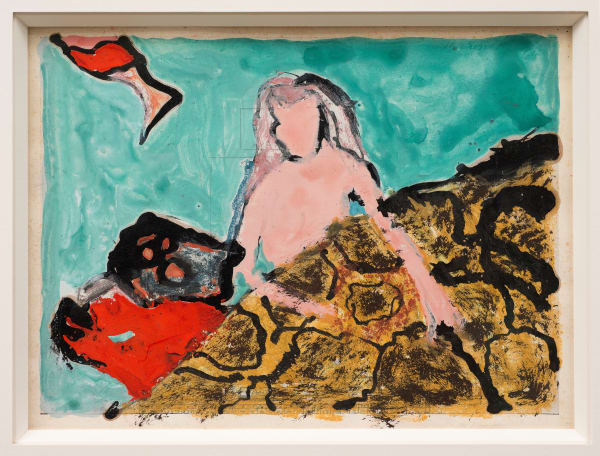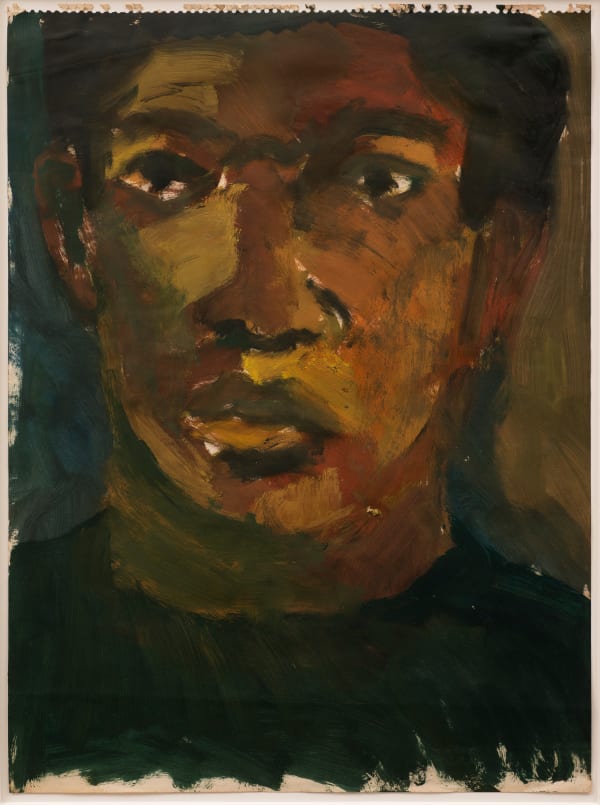Bob Thompson US, 1937-1966
“He brings to his work a profound understanding and relentless curiosity about what it takes to put a composition together. I think that is the reason that so many artists return to the work, live with the works, and want to continue to turn the work over in their minds.”
- Diana Tuite
Bob Thompson's short, but dynamic, career began in the late 1950s and ended in his premature death less than a decade later. Like other artists of his generation in New York, Thompson developed a vital new figurative style in reaction to the dominance of abstract art, yet adapted its spontaneity, scale, and expressive use of color.
The Spinning, Spinning, Turning, Directing is a drama of bold exaggerations. Its principals are fantastic creatures whose silhouettes and unnatural colors distort their human, animal, or phantom origins. Sweeping curves, sharp zigzags, and steep diagonals rhythmically link the figures as they stand, sit, fall, or fly in their arbitrary space. A single tree in an arched opening focuses the scene, suggesting a cave that shelters its strange inhabitants from a brightly lit landscape.
Thompson was inspired by the play of good and evil, which creates both order and chaos in the relationships of man, animals, and nature. In his vision, nude female figures express nature's sensuality, while birds symbolize power and freedom as well as his preoccupation with the ultimate flight of death. Thompson revered the Old Masters, including Piero della Francesca, Masaccio, and Poussin, and used their works as points of departure. In The Spinning, Spinning, Turning, Directing, he reinterpreted images from three of Goya's Los Caprichos: Tale Bearers, Hobgoblins, andRise and Fall. Whether sensual, spiritual, or tortured, Thompson's paintings are metaphors of both the rational and irrational forces of nature.
- Lynda Roscoe Hartigan African-American Art: 19th and 20th-Century Selections (brochure. Washington, D.C.: National Museum of American Art)



